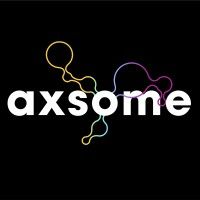预约演示
更新于:2025-05-07
NET x α-adrenergic receptor
更新于:2025-05-07
基本信息
关联
5
项与 NET x α-adrenergic receptor 相关的药物作用机制 DAT拮抗剂 [+2] |
在研适应症 |
非在研适应症- |
最高研发阶段批准上市 |
首次获批国家/地区 美国 |
首次获批日期2021-03-02 |
作用机制 NET激动剂 [+1] |
在研机构 |
在研适应症 |
非在研适应症- |
最高研发阶段批准上市 |
首次获批国家/地区 日本 |
首次获批日期2001-03-28 |
作用机制 ADRA2拮抗剂 [+1] |
非在研适应症 |
最高研发阶段临床3期 |
首次获批国家/地区- |
首次获批日期1800-01-20 |
21
项与 NET x α-adrenergic receptor 相关的临床试验RBR-7w75qby
Reboxetine and Oxybutynin for the treatment of Obstructive Sleep Apnea: a randomized clinical trial
开始日期2024-09-01 |
申办/合作机构- |
NCT05599126
A Multicenter Open Study of the Efficacy of Mianserin in Combination With SSRIs in Patients With Depression With Sleep Problems
Patients with depression with sleep problems have functional abnormalities of 5-HT and NE neurotransmitters, and the NaSSA class antidepressant mianserin has an ameliorative effect on sleep problems along with antidepressant. However, whether mianserin can improve cognitive function in patients still needs to be explored. The benzodiazepine lorazepam can play a central inhibitory role and has good therapeutic effect on insomnia. The mechanism of action of mianserin and lorazepam is different, and there are few comparative studies related to the combination of the two with SSRI drugs for the treatment of depressed patients with sleep problems, and it is unclear whether there are differences in their efficacy and safety. Therefore, to address the above scientific questions, this study was designed to include 100 patients aged 18-60 years with depression with sleep problems, randomly divided into two groups and treated with mianserin + escitalopram or lorazepam + escitalopram, respectively, and followed up for 8 weeks to assess depression and anxiety symptoms, sleep, cognitive function and drug safety. To compare the efficacy and safety of the two regimens in depressed patients with sleep problems and to provide a scientific basis for clinical intervention in depressed patients with sleep problems.
开始日期2024-07-01 |
申办/合作机构 |
100 项与 NET x α-adrenergic receptor 相关的临床结果
登录后查看更多信息
100 项与 NET x α-adrenergic receptor 相关的转化医学
登录后查看更多信息
0 项与 NET x α-adrenergic receptor 相关的专利(医药)
登录后查看更多信息
213
项与 NET x α-adrenergic receptor 相关的文献(医药)2025-05-01·Molecular Neurobiology
Selective Noradrenergic Activation of BDNF Translation by Mirtazapine
Article
作者: Santoni, Letizia ; Tongiorgi, Enrico ; Ciraci, Viviana
2025-04-01·Biological Psychiatry
Noradrenaline modulates central amygdala GABA transmission and alcohol drinking in female rats
Article
作者: Hughes, Kiley ; Zalfa, Cristina ; Gandhi, Pauravi ; Borgonetti, Vittoria ; Rodriguez, Larry ; Erikson, Chloe Michelle ; Bajo, Michal ; Martin-Fardon, Rémi ; Vozella, Valentina ; Roberto, Marisa ; Barchiesi, Riccardo ; Flores-Ramirez, Francisco J ; Vlkolinsky, Roman ; Cruz, Bryan ; Mayfield, R Dayne ; Anjos-Santos, Alexia
2025-04-01·Cell Stem Cell
Interferon-responsive intestinal BEST4/CA7+ cells are targets of bacterial diarrheal toxins
Article
作者: Akkerman, Ninouk ; Spoelstra, Willem Kasper ; Dayton, Talya ; van Zon, Jeroen S ; Lin, Lin ; Tans, Sander J ; Clevers, Hans ; Krueger, Daniel ; Wang, Daisong ; van Es, Johan H
1
项与 NET x α-adrenergic receptor 相关的新闻(医药)2023-11-16
·医药观澜
▎药明康德内容团队报道中国上海,2023年11月15日—上海爱科百发生物医药技术股份有限公司(以下简称“爱科百发”)与药明康德签署战略合作协议,共同宣布在创新药研发领域开展全面合作。爱科百发作为一家创新生物医药公司,针对儿科疾病、呼吸系统和肺部疾病领域未被满足的重大临床需求拥有多项新药产品布局。此次战略合作,药明康德多个业务部门将以全方位、一体化的新药研发及赋能平台为爱科百发提供符合国际标准的一站式服务。爱科百发董事长兼首席执行官邬征博士,首席运营官袁海卿博士,药明康德联席首席执行官杨青博士,副总裁、测试事业部中国区运营及业务拓展负责人许晖女士等共同出席了本次签约仪式。药明康德联席首席执行官杨青博士(左)、爱科百发董事长兼首席执行官邬征博士(右)爱科百发董事长兼CEO邬征博士表示:“爱科百发始终致力于研发具有高临床价值的创新药,很高兴此次与多年来的重要合作伙伴药明康德达成全面战略合作。双方将充分发挥各自资源优势,更好地推进药物研发工作,早日将更多创新药产品推向市场,造福大众。”药明康德联席首席执行官杨青博士表示:“此次签署战略合作协议是对双方先前成功合作的深化,是药明康德一体化、端到端服务持续赢得客户认可的又一有力体现。我们希望通过不断提升的赋能平台能力和规模建设,助力全球客户加速研发进程,早日惠及广大病患。”关于爱科百发爱科百发是一家创新生物医药公司,专注于儿童和呼吸疾病领域未被满足的重大临床需求。自2014年成立以来,公司在具有全新作用机制的创新药物研发领域拥有多项核心技术和全球专利,通过自主研发和外部引进相结合的研发模式,开发出高度差异化的丰富产品管线。核心产品爱司韦®是全球范围内首款完成三期临床试验并取得积极结果的RSV特效抗病毒药物,其新药上市申请已获NMPA受理并被纳入“优先审评审批”程序。爱司韦®也是首个纳入国家突破性治疗品种的非肿瘤新药。另一个接近商业化的产品是已获得FDA批准的多动症(ADHD)新药AZSTARYS®(中文名爱智达®),爱科百发拥有其大中华区的开发和营销权。公司还拥有数个具有同类最佳或同类首创潜力的新药正处于临床试验或临床前开发阶段。爱科百发与罗氏/基因泰克等跨国药企、美国学术机构Scripps研究所、中国科学院微生物研究所、国内外生物技术公司及跨国医疗投资机构建立了战略合作关系。公司详情,请访问网站:www.arkbiosciences.com投资者垂询:IR@arkbiosciences.com关于药明康德药明康德(股票代码:603259.SH/2359.HK)为全球生物医药行业提供一体化、端到端的新药研发和生产服务,在亚洲、欧洲、北美等地均设有运营基地。药明康德通过独特的“CRDMO”和“CTDMO”业务模式,不断降低研发门槛,助力客户提升研发效率,为患者带来更多突破性的治疗方案,服务范围涵盖化学药研发和生产、生物学研究、临床前测试和临床试验研发、细胞及基因疗法研发、测试和生产等领域。2023年,药明康德被MSCI评为ESG(环境、社会及管治)AA级。目前,公司的赋能平台正承载着来自全球30多个国家的6000多家合作伙伴的研发创新项目,致力于将更多新药、好药带给全球病患,早日实现“让天下没有难做的药,难治的病”的愿景。参考资料:[1]爱科百发与药明康德签署战略合作协议,全面开展创新药研发合作 . Retrieved Nov 16, 2023, from https://mp.weixin.qq.com/s/P3kTqcF0I9C22KWMU4ykqw本文转载自「药明康德 WuXi Biology」公众号,欢迎个人转发至朋友圈。免责声明:药明康德内容团队专注介绍全球生物医药健康研究进展。本文仅作信息交流之目的,文中观点不代表药明康德立场,亦不代表药明康德支持或反对文中观点。本文也不是治疗方案推荐。如需获得治疗方案指导,请前往正规医院就诊。
优先审批临床3期申请上市
分析
对领域进行一次全面的分析。
登录
或

生物医药百科问答
全新生物医药AI Agent 覆盖科研全链路,让突破性发现快人一步
立即开始免费试用!
智慧芽新药情报库是智慧芽专为生命科学人士构建的基于AI的创新药情报平台,助您全方位提升您的研发与决策效率。
立即开始数据试用!
智慧芽新药库数据也通过智慧芽数据服务平台,以API或者数据包形式对外开放,助您更加充分利用智慧芽新药情报信息。
生物序列数据库
生物药研发创新
免费使用
化学结构数据库
小分子化药研发创新
免费使用




